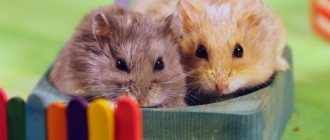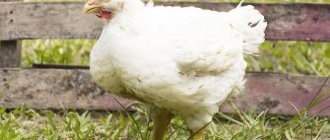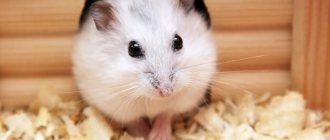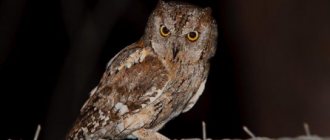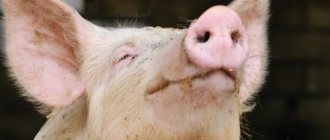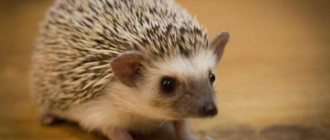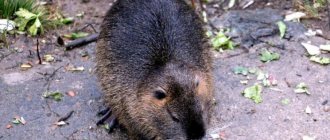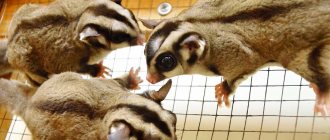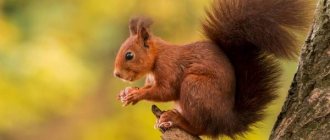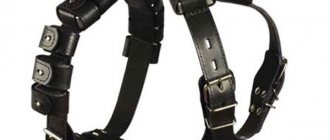Having made a deliberate decision to get a hamster at home, you must first make sure that your household members are not allergic to animal fur, choose the right place of residence for the future pet and study the rules for caring for it.
The hamster is a rather picky animal, but still requires careful care and attentive attitude towards itself.
Pros and cons of keeping a hamster at home
Before you get a pet hamster, you need to familiarize yourself with its main characteristics.
A convenient feature of this animal is that it is kept without a similar individual, that is, the hamster does not have to have a mate. He feels great alone, unless, of course, you are going to start breeding them.
The benefits of breeding a hamster at home are:
- small fluid intake, in case of taking juicy foods;
- keep the room quiet;
- the main difference from cats and dogs is the absence of rancor and resentment;
- have a positive attitude towards children;
- occupy a fairly small area;
- easy to train;
- breed in captivity;
- unpretentious in eating.
- in winter, the hamster can hibernate, and when it wakes up, it requires more food;
- constant care of the cage in which the animal is kept is necessary;
- It is necessary to keep a hamster only in a terrarium, otherwise it can ruin things;
- a hamster can be aggressive towards people.
Breeds of domestic hamsters
Hamsters are gray and white, smooth-haired and fluffy, calm and active. It all depends on their origin, so what are the differences between the breeds of domestic hamsters and which one is better to get?
Djungarian hamster
This breed is very interesting - small but nimble hamsters that will definitely not leave you indifferent. Djungarians can range from a completely snow-white fur coat to a dark, intricate pattern on the back. As a rule, males are much larger than females.
Adult Djungarian hamster
The maximum height is 10 cm, but girls are rarely larger than 6 cm. And the average weight of an adult animal is 50 g. The historical homeland is the steppes of Altai, Kazakhstan, Mongolia, China and even Siberia. In the wild, they construct and live in small burrows. They love to bathe in the sand; this procedure helps keep their fur clean.
Djungarian hamsters are known for their fertility; one litter can have up to 12 babies. By nature, these are fast, elusive hamsters. Can become tame if handled properly.
Syrian hamster
It has many names: golden, royal, Western Asian, Angora.
A fairly large representative of hamsters, it can reach 13.5 cm and weigh up to 125 g. It is most often found in a reddish-golden color. They were first discovered in Turkey and Syria, hence their name.
Photo of Syrian golden hamster
This type of hamster, given the right home conditions, can live quite a long time - up to 4 years.
Angora hamsters are the result of a mutation. Unlike classic Syrians, they have a longer coat, up to 3 cm. Such fluffy beauties cannot be washed in water - they are susceptible to colds.
Roborovsky's hamster
These animals are named after the person who studied them. One of the smallest in size in the world, up to 5 cm in length and weighing up to 30 g. People often call this fluffy lump “dwarf”. They differ from the Dzungarians in color, lack a dark stripe and are smaller in size. The usual color of these hamsters is grayish-brown with a white belly.
Roborovsky's hamster
Roborovsky's hamsters are social animals; it is better to keep them together in groups of 2 or 3 individuals. Such hamsters are quite difficult for children, so it will be difficult for them to cope with them - the animal can easily scurry to the floor and hide. In the wild, the Roborovsky hamster is capable of covering more than 10 km per day. Life expectancy is from 3 to 3.5 years.
Campbell's hamster
The breed is also classified as dwarf. Size up to 10 cm, and weight around 25 g. Unlike their counterparts, they are very social. If you put a group of hamsters together at a young age, they will live well together without fighting.
Campbell's hamster
Males play a large role in raising offspring. Campbell's hamster is most active at dusk and dawn. They do not live long - about a year. Also, such hamsters have poor eyesight, but they adapt perfectly to this through their sense of smell. The colors of the babies can be completely different: from standard to almost platinum.
Sungur hamster
These hamsters are very similar to Djungarian hamsters. But they come from Siberia. Their second name is Russian whitening. The color of the fur coat can change: in winter it will be white, and the rest of the time it will be dark.
Sungur hamster
Sungur hamsters have large eyes and very soft fur. Such hamsters also differ from their relatives in that they rest during the day and are active at night. Life expectancy is quite high - about 3 years.
Keeping a hamster at home
Before getting a hamster, you need to carefully consider its habitat in the premises. A glass jar, aquarium or box will bring discomfort to the little resident.
For these purposes, it is wise to purchase a spacious iron cage (50 by 30 centimeters) with horizontal bars, the distance between which is not too wide so that the animal cannot get out of its home.
The resident needs to select additional special accessories for their new home:
- The bottom of the house must be filled with filler, which will help avoid unpleasant odors. It needs to be changed regularly, washing the cage thoroughly. The filler comes in pressed form and in granules. It is also wise to sprinkle some sawdust, which hamsters like to burrow into before going to bed.
- You need to place a couple of feeders in the cage: for natural food and for dry food.
- It is wise to hang a special drinking bowl for small animals on the bars of the house, the water from which will not flow out on its own.
- A running wheel will help an active animal spend time without being bored.
- To periodically sharpen sharp teeth, a mineral pebble is placed in the cage.
- The pet will choose the corner for the toilet itself; the toilet must be regularly replaced with fresh flooring.
Let's draw a funny hamster thanks to the cells in the notebook
This drawing will allow you to understand the principle of creating an accurate image of an animal on a notebook sheet of paper.
It's important to realize that this creative process may vary slightly with your hamster. However, now you will understand where to start and how to move forward to form a good drawing. This will be enough for today. First you need to prepare a pencil, pen and colored pencils. You can go to the drawing:
- Draw an arc two squares downwards based on the top of the sheet. Now move five cells to the right and add an identical arc. From the top of the sketches, draw a small circle the size of one square to form the ears. Inside the oval, create a smaller copy of the circle. From the ears, draw a line two squares to the left and right. Create a piece of fur in the middle.
- It is necessary to highlight the large cheeks, thanks to the same semicircular lines from the bottom of the sketch. In the space between them you create a cute mouth. Add a nose using the required oval shape. Now you can add teeth to the mouth. The teeth should be shaded.
- Draw oval-type eyes near the nose or above it. Select the pupils and shade the free space. Leave the highlights for beauty. Add eyebrows. From the cheeks, create the outline of the body, and design the animal’s paws pointing upward. Let him be nice.
- At the bottom of the body, add two more legs, since it has four limbs. To complete it, you should draw a seed in any upper paw.
- Now use colored pencils to color the animal. The seed can be painted over, thanks to the pen; use it to highlight the contours.
- Painting with any authentic colors is allowed. Hamsters come in white, black, brown, or alternating colors. Most often there are bicolors. Therefore, use two colors at your own discretion. Your child can do this work. They usually like to color, but not create details.
Well, what's not so difficult? Liked? Then move on to more complex options. Don’t worry, they will work out too, if you stick to the plan, the work will be simple even for a beginner.
Pet hamster diet
If you still decide to get a pet, you need to know what a hamster eats several times a day. Since this animal is active at night, select the most high-calorie foods for its evening meal. To avoid poisoning, do not feed him excessively watery food (watermelon, melon, cucumber, etc.).
Approximately once a day you need to give your pet a special food made from a mixture of grains, the range of which is offered by specialized pet stores for animals.
The hamster usually determines the norm for one meal without anyone's help, but food must be constantly present, as well as the presence of fresh water. Don't forget to make sure your pet drinks enough throughout the day, this is a vital condition for hamsters!
Approximate diet for a domestic hamster:
- Vegetables and fruits, pitted.
- Potato.
- Grain mixture.
- Lean cooked meat.
- Seeds and nuts in small portions.
- Vitamin complex.
It is highly undesirable to feed your animal garlic and onions, citrus fruits and tropical foods.
How to determine the breed of a hamster: algorithm
You need to rely on several points. These are: body length and color.
- Up to 5 cm, white belly and beige-brown back - Roborovsky's hamster.
- Up to 10 cm, with a predominance of gray color, with a black stripe on the back - jungarik.
- About 15 cm and a small tail, golden, uniform in color - Syrian hamster.
- Within 14-15 cm, the abdomen with legs is white, and the back is dark, then this is a Campbell's hamster.
These are the most common breeds to keep at home. If you need to determine the breed of small hamsters, then you should look at their parents, if possible, or focus on color.
Photos of hamsters
- Cow - description of appearance, diet, breed, interesting information + 109 photos
- Chinchilla - breed classifications, fur features, care rules, nutrition and bathing + 94 photos
The live image of a hamster is the most kawaii
If you do everything according to plan, then it’s easy to depict a hamster in life-size. A black pen or pencil will help. Let's start:
- Draw a circle. This is a natural rodent eye. Paint over it, but the highlights remain for beauty. The contours are highlighted with a pencil. Indent to the left and create an outline of the shape of the animal’s body. Below, use two semicircles to form the chin. Form your nose and mustache a little higher in both directions.
- Go back to the top and create a left and right ear. To the right of the ear, lower the line down to form a voluminous body. Also, from the other ear, make a line down to create an identical body like a hamster.
- The outlines are almost ready. But you need to add paws to the front. In this case, only two legs will be visible, since the rest will be hidden under the body of the animal. Add an image of fur to the outlines. Of course, this is not the senior level, but you are doing well.
- It is necessary to highlight the outline with a black pen. Use dash lines to highlight the nose, sides of the body, and cheeks. Now you can use felt-tip pens or pencils. It is necessary to revive the picture. Highlight the nose with pink. You can paint the fur with love colors.
Bravo you did it. But this option is not the most difficult to learn. Do you want to continue?
